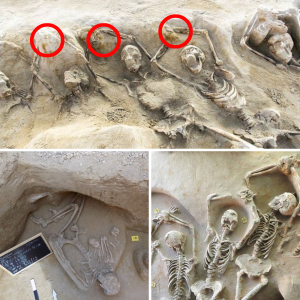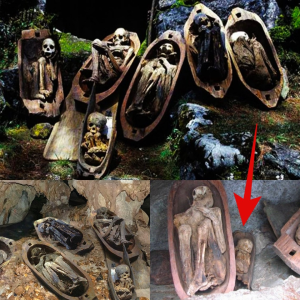At a luxury seaside villa at Posillipo near Naples, researchers have unearthed an ancient Roman mosaic which once decorated the home of a horrific and horrendous Roman tyrant known as Publius Vedius Pollio. Remembered for his cruel treatment of slaves, legend has it that Pollio went so far as to feed his servants to parasitic worms.
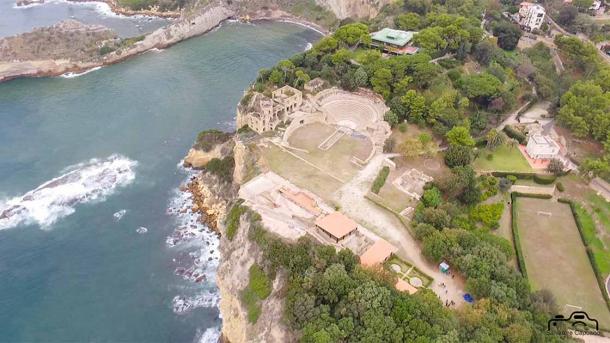
Aerial image of Posillipo Archaeological Park on the coast of Posillipo, which includes the ruins of the Roman villa of Publius Vedius Pollio. (Salvatore Capuano / CC BY-SA 2.0 )
High Living on the Bay of Naples
Pausílypon is a plush residential neighborhood in the hills of the city of Naples and the name means “respite from worry.” According to ancient Greek and Roman sources, during the Roman period the coastline of Campania attracted wealthy Roman families, much like the beachside villas along the coast of Malibu attracting residents of Los Angeles today.
- Eaten Alive By Eels: The Infamous Cruelty of Publius Vedius Pollio
- The Search Is On For Caligula’s Orgy Boats Where His Twisted Fantasies May Have Been Played Out
Posillipo is accessible via the 770 meter (2526 ft) long “Grotta Seiano” tunnel, which was originally excavated during the Roman period. The Pausilypon Archaeological-Environmental Park consists of several ancient Roman structures facing the sea which are all centered around the main villa of one of history’s more loathsome tyrants, Vedius Pollio. At this ancient villa, researchers have uncovered a rare mosaic floor from the villa’s first phase of construction.
Situated on a rocky promontory at the end of the Bay of Naples this site is also known as the Imperial Villa. Equipped with its own 2000-seat mega-theatre for big nights, an Odeon provided for smaller shows. Furthermore, a Nymphaeum shrine consecrated to water nymphs and a spa complex assured that elite residents and visitors basked in the highest luxury.
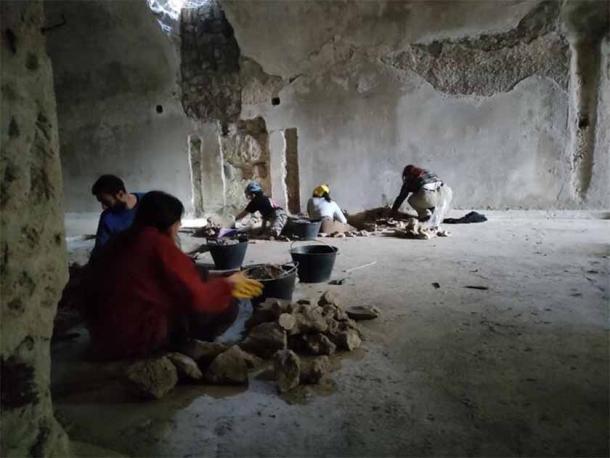 Set featured image
Set featured imageExcavations of the Roman mosaic unearthed at the villa of of Publius Vedius Pollio at Posillipo. ( University of Naples “L’Orientale” )
A Mosaic with a Dark History
Archaeologists from the University of Naples L’Orientale recently said in a press release that the mosaic was discovered in a living room overlooking the sea of Naples. The floor cover was made from “tiny white pieces of tesserae with a double black frame.” In ancient Roman mosaic work, the word tesserae represents any small piece of stone, glass or ceramic.
Professor Marco Giglio of the L’Orientale University of Naples, who led the excavation of the mosaic, explained that while stratigraphic dating was not possible the style of the mosaic suggests it might date back to “the late Republican age or Augustan at the latest.” While it can be argued that the artifact is anything but spectacular, its context is perhaps very important.
It is suspected that the mosaic was probably buried beneath renovation works that were commissioned by Emperor Augustus after Vedius’s death. To understand why a Roman emperor spent funds at a soldier’s luxury resort, we must first learn a little about the horrid ways of Publius Vedius Pollio.
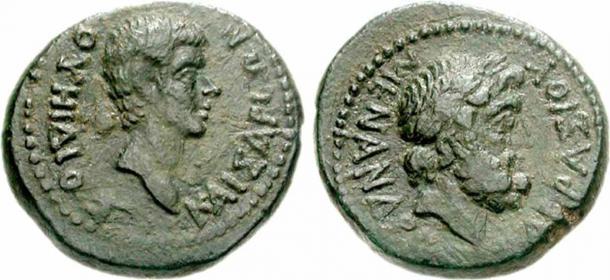
Roman coin depicting the cruel Publius Vedius Pollio. (CNG Coins / CC BY-SA 3.0 )
Publius Vedius Pollio: The Ultimate Turncoat
An article in Heritage Daily explains that during the 1st century BC Pollio was not only infamous for his luxurious tastes, but perhaps more so for his “cruelty to slaves.” What is particularly repugnant about Pollios horrific treatment of fellow humans, in this instance slaves, is that this wealthy Roman cavalier was himself born into a freed slave family.
When hearing about the facts of his particularly cruel treatment of slaves it appears that Pollio was a turncoat of the highest and most putrid order. But Pollio wasn’t just into run of the mill “ordinary torture,” for history records him having a thing for prolonged pain and terror.
Perhaps most iconic of Pollio’s demonic ways is what happened when Augustus himself visited the grand villa in the Bay of Naples. While dining, a cup-bearing slave slipped and smashed a crystal glass. For his minor misdemeanor Pollio sent the man to be thrown into a well full of parasitic lamprey worms. This time however, the slave pleaded Augustus for mercy.
- “Hold Me Or I Will Run!” Roman Slave Collars Came With A Warning
- Author Details Institutionalized Murder and Violence in Ancient Rome
The emperor was so disgusted at the way Publius Vedius Pollio had judged and subsequently treated the slave that he ordered all of Pollio’s most expensive glasses be smashed. Moreover, he instructed that the eel pool be filled in.
So embarrassed was Vedius Pollio that when he died in 15 BC he left his entire estate to Augustus. As an imperial property it passed through the hands of every Roman ruler until Hadrian in 138 AD. The mosaic, therefore, is another insight into the excessive wealth of an utterly horrifying man who fed people to parasites.
Top image: Roman mosaic being excavated at the villa of Publius Vedius Pollio at Posillipo. Source: University of Naples “L’Orientale”
By Ashley Cowie

